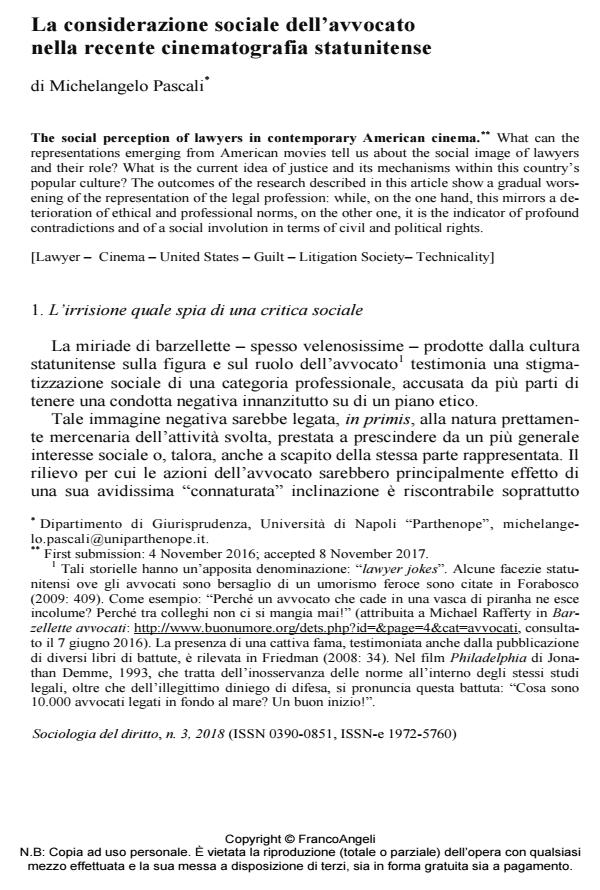La considerazione sociale dell’avvocato nella recente cinematografia statunitense
Titolo Rivista SOCIOLOGIA DEL DIRITTO
Autori/Curatori Michelangelo Pascali
Anno di pubblicazione 2018 Fascicolo 2018/3
Lingua Italiano Numero pagine 27 P. 131-157 Dimensione file 335 KB
DOI 10.3280/SD2018-003007
Il DOI è il codice a barre della proprietà intellettuale: per saperne di più
clicca qui
Qui sotto puoi vedere in anteprima la prima pagina di questo articolo.
Se questo articolo ti interessa, lo puoi acquistare (e scaricare in formato pdf) seguendo le facili indicazioni per acquistare il download credit. Acquista Download Credits per scaricare questo Articolo in formato PDF

FrancoAngeli è membro della Publishers International Linking Association, Inc (PILA)associazione indipendente e non profit per facilitare (attraverso i servizi tecnologici implementati da CrossRef.org) l’accesso degli studiosi ai contenuti digitali nelle pubblicazioni professionali e scientifiche
What can the representations emerging from American movies tell us about the social image of lawyers and their role? What is the current idea of justice and its mechanisms within this country’s popular culture? The outcomes of the research described in this article show a gradual worsening of the representation of the legal profession: while, on the one hand, this mirrors a deterioration of ethical and professional norms, on the other one, it is the indicator of profound contradictions and of a social involution in terms of civil and political rights.
Parole chiave:Lawyer - Cinema - United States - Guilt - Litigation Society -Technicality
Michelangelo Pascali, La considerazione sociale dell’avvocato nella recente cinematografia statunitense in "SOCIOLOGIA DEL DIRITTO " 3/2018, pp 131-157, DOI: 10.3280/SD2018-003007